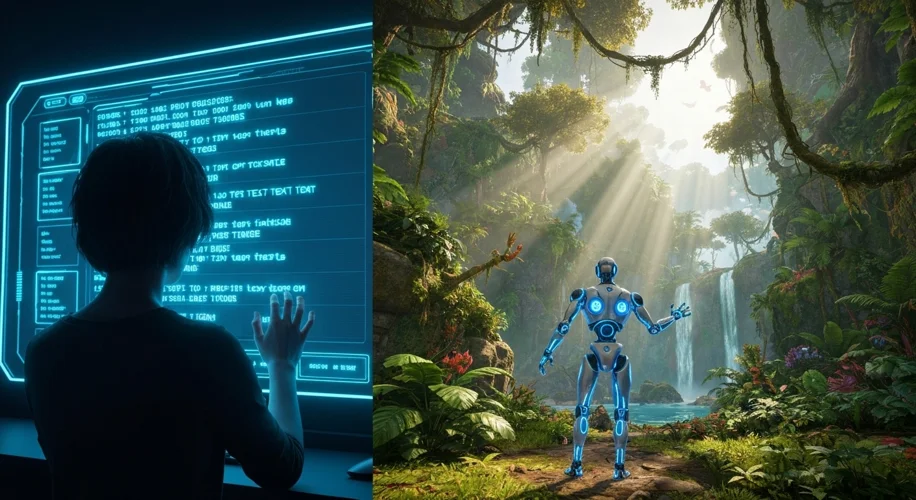It’s been a long time since we’ve seen AI capable of truly understanding and creating interactive environments from simple text prompts. Now, DeepMind’s Genie 3 is showing us what’s possible.
Imagine typing a description – “a robot exploring a jungle” – and having a fully playable, interactive game world appear. That’s essentially what Genie 3 is doing. It’s a significant step in what we call ‘world modeling.’ Instead of just generating static images or text, Genie 3 builds dynamic, simulated spaces that an AI agent can actually navigate and interact with.
For years, my work in the tech industry often touched upon the potential of AI in creating more realistic simulations. We saw glimpses of it in training AI for complex tasks, like driving cars or navigating warehouse floors. But Genie 3 goes further by making these worlds not just functional for AI training, but potentially explorable and fun for humans, too.
What does this mean for us? Well, the implications are quite broad.
For Gaming: Think about game development. Instead of spending years building vast worlds, developers might be able to generate diverse environments from simple descriptions. This could lead to incredibly varied and personalized gaming experiences. A player could describe their ideal adventure, and the game could literally build it for them.
For AI Training: This capability is also a huge leap for training AI agents. By creating these rich, interactive worlds, AI can learn more about cause and effect, physics, and even social interactions in a much more naturalistic way. It’s like giving AI a sandbox to learn and grow.
For Education and Simulation: Beyond games, consider how this could be used for education. Imagine history students exploring a virtual ancient Rome generated from a text prompt, or medical students practicing complex procedures in AI-created patient simulations.
Of course, with such powerful generative capabilities, we also need to consider the ethical side. As AI becomes better at creating convincing, interactive realities, questions arise about authenticity, potential misuse, and the very nature of simulated experiences. It’s crucial that we approach these advancements thoughtfully, ensuring that these tools are developed and used responsibly.
DeepMind’s work with Genie 3 isn’t just about creating pretty pictures or functional simulations; it’s about building bridges between human language and interactive digital realities. It’s a fascinating development that promises to reshape how we think about content creation, AI learning, and the digital worlds we inhabit.

